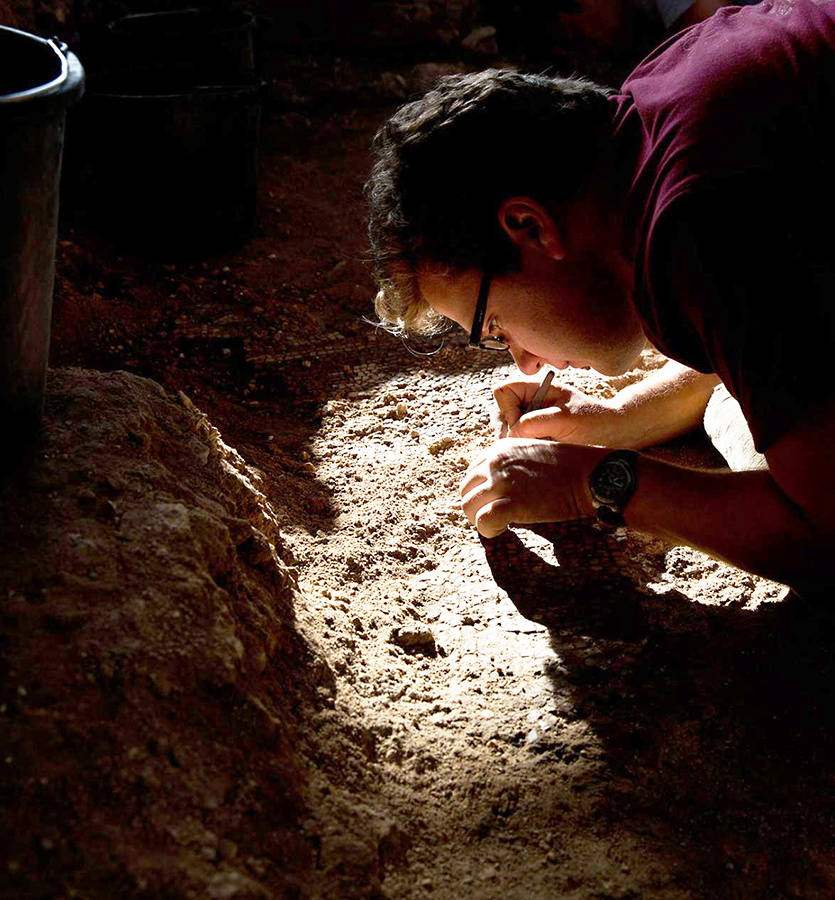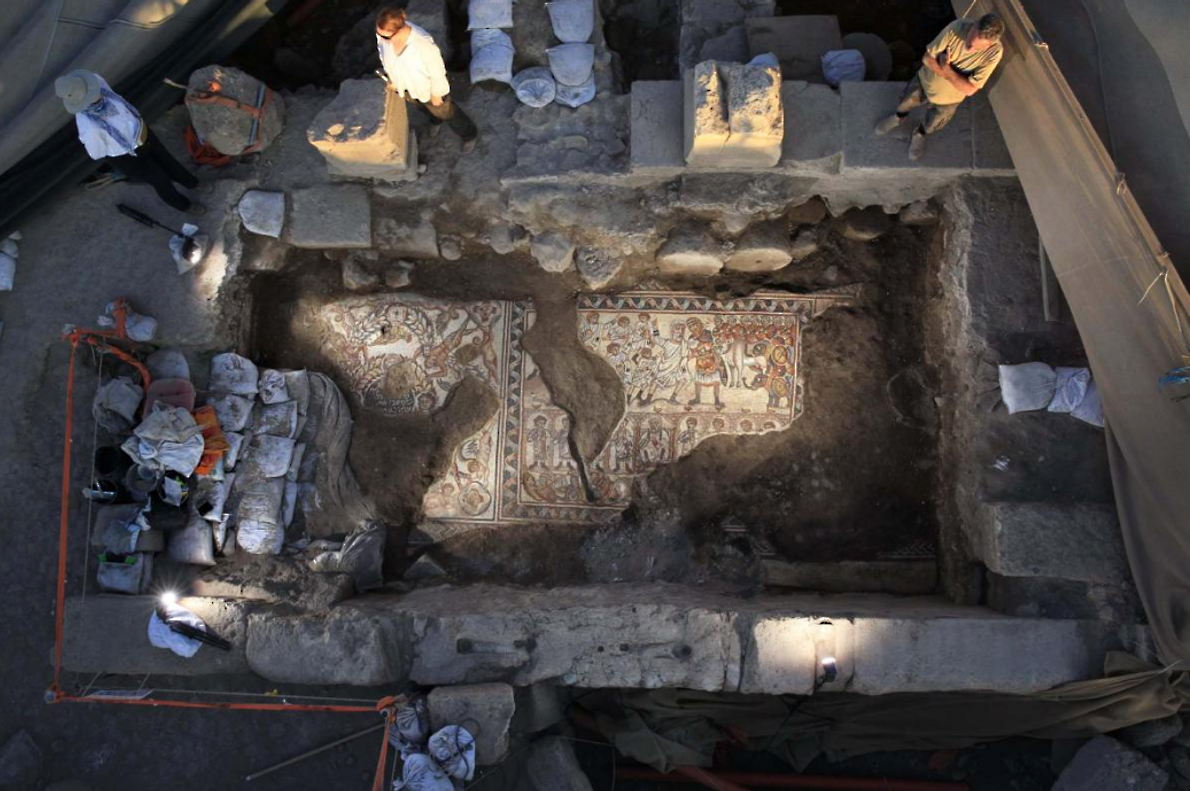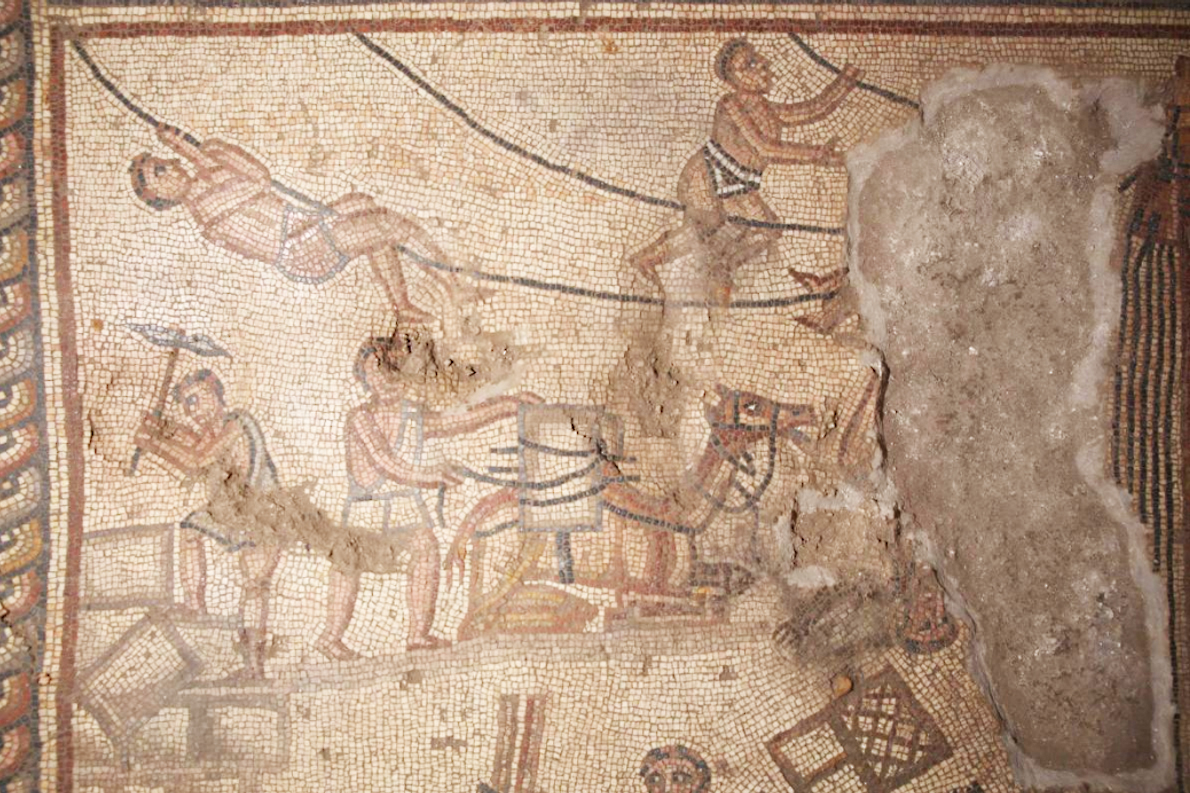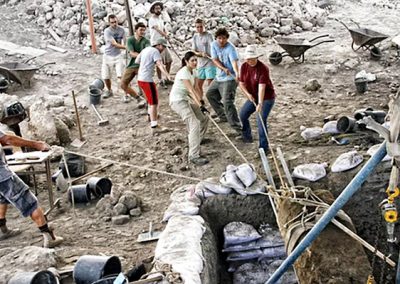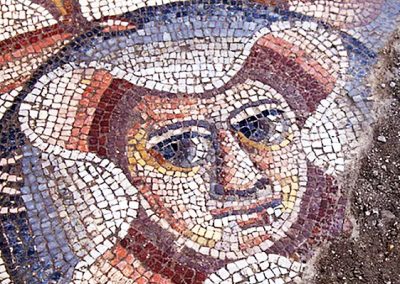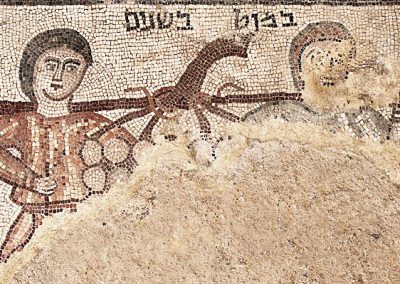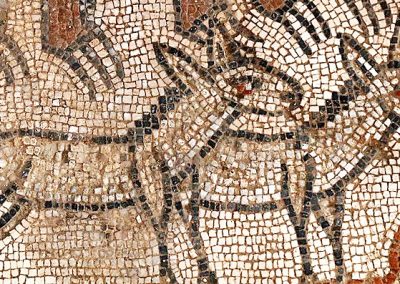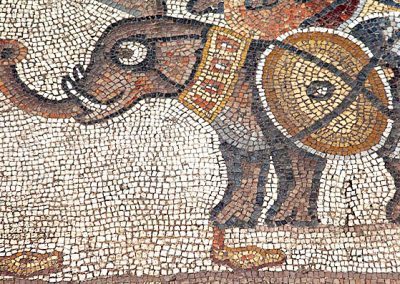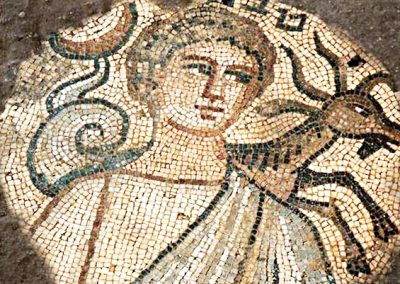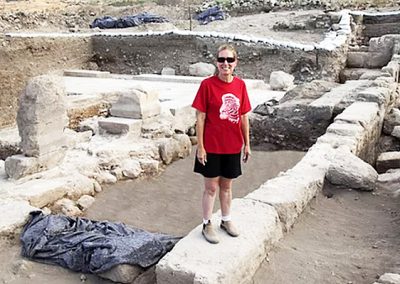
Bible, History, Archaeology
Bible,
History,
Archaeology
Mosaics discovered at Huqoq,
they illustrate biblical scenes
The remains of two mosaics were found by a group of archaeologists at the Huqoq site in northern Israel. They depict Noah's Ark and Moses' crossing of the Red Sea.
An archaeologist cleaning a mosaic uncovered at the site. Oded Balilty, National Geographic.
To view the cleaning of the mosaic discovered, click on the image. →
A general view of the site where mosaics were unearthed in 2016 at Huqoq in northern Israel. Marc Thiessen/National Geographic.
Archaeological digs and discoveries

Image opposite: a view of the excavations under the site's protective tent. Oded Balilty, National Geographic.
Jodi Magness, professor of archaeology at the University of North Carolina and explorer for National Geographic, has been excavating at Huqoq since June 2012. In June 2016, she reinforced her team of volunteers and specialized students. Until then, she had worked in the east wing of the synagogue, where a series of extraordinary mosaics had been discovered. These depicted scenes rather unusual for a synagogue: a Hebrew inscription surrounded by masks inspired by classical theater, cupids and dancers; biblical scenes such as Samson and the foxes according to Judges 15:4, or Samson with the gates of Gaza on his shoulders according to Judges 16:3. Finally, a non-biblical three-part scene never before found in an ancient synagogue. It showed a meeting between two giant figures surrounded by soldiers and elephants armed for war.
There was no evidence that the mosaics extended into the nave, the central part of the synagogue. When digging began, however, it was hoped to find something under the stones and dust of the floor.
One morning, Shua Kisilevitz, deputy director of the Israel Antiquities Service, who was supervising the painstaking removal of the sediment, heard enthusiastic shouts. The students rose to their feet and began to dance and sing: they had just hit a new mosaic fragment in the nave.
A view of the Roman mosaic (detail) at the Huqoq site © Marc Thiessen/National Geographic.
Rarity and giant fish
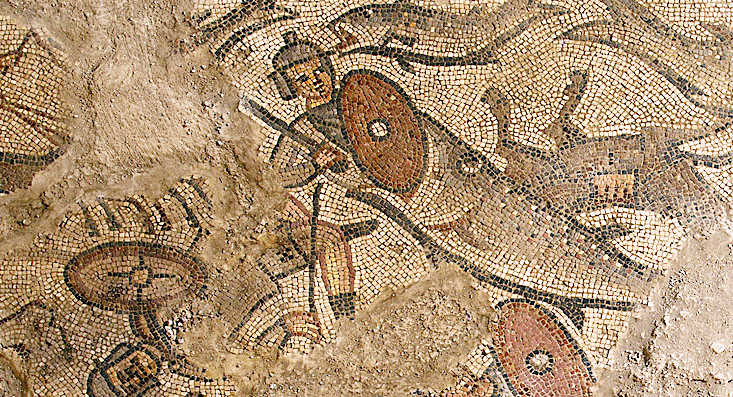
Image opposite: a partial view of the mosaic showing the drowning of Pharaoh's soldiers pursuing the Hebrews through the Sea of Reeds. Oded Balilty, National Geographic.
Only two other depictions of the crossing of the Red Sea were known to exist in synagogues as old as these, one at Dura Europos in Syria and the other at Wadi Hamam in Israel.
A second scene depicted Noah's Ark, a theme that was also exceptional in that only two representations of it were ever discovered. The first was at the Jerash site in Jordan, the second at Misis in Turkey.
Enthusiastically, the researchers extracted the two mosaics from the ground and restored them in the laboratory. They will soon be on display in a museum, while the team returns to the Huqoq site to continue their excavations.
Sources: Mathias Pisana, Le Figaro, July 8, 2016; A.R. Williams, National Geographic, July 5, 2016.
A view of the Roman mosaic (detail) at the Huqoq site © Marc Thiessen/National Geographic.
Students removing stones during archaeological excavations at Huqoq © Hill Debbie/UPI/PACA
Students removing stones during an archaeological dig at Huqoq.
A section of the mosaic shows a theatrical mask © Hill Debbie/UPI/PACA
One section of the mosaic shows a theatrical mask.
The mosaic depicts two explorers returning from Canaan carrying a bunch of grapes suspended from a pole. Oded Balilty, National Geographic.
The mosaic depicts two explorers returning from Canaan carrying a bunch of grapes suspended from a pole.
A representation of some of the animals on Noah's Ark © Hill Debbie/UPI/PACA.2
A representation of some of the animals on Noah's Ark.
One of the two mosaics (detail) uncovered at the Huqoq site © Hill Debbie/UPI/PACA
One of the two mosaics (detail) uncovered at the Huqoq site.
A section of the mosaic shows Samson carrying the gate of Gaza. Hill Debbie/UPI/PACA
A section of the mosaic shows Samson carrying the gate to Gaza.
A mosaic depicting the month of Teveth (December-January) with the sign of Capricorn. Jim Haberman, via UNC Media Relations.
A mosaic representing the month of Teveth (December-January) with the sign of Capricorn.

